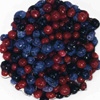In this final weblog, I curate examples of Inuit knowledge. I am moving beyond the focus on Inuit Qaujimajatuqangit, as each region has different ways to speak of Inuit Knowledge. These site are sources of inspiration, and I have tried to represent examples from the four Inuit regions in Canada:
- Nunatsiavut (Labrador)
- Nunavik (Quebec)
- Nunavut.
- The Inuvialuit Settlement Region of the Northwest Territories
16. Paatsaalit School, Sanikiluaq, Nunavut
Paatsaalit High School demonstrates how the school and broader community are involved in the well being of students and community members. Explore the achieve to view images of life in a northern school.
17. Jaanimmarik School, Kuujuaq, Quebec
Jaanimmarik regularly blogs about the events and activities at the school. The living culture is present in the photos within themes that are present in many schools across Canada (i.e. prom, picnics).
18. Gwich’in Social and Cultural Institute, Fort McPherson, Northwest Territories
This site is a hub of local Inuit knowledge, the project has videos and information on a variety about Elders, clothes, language, and a bank of images on variety of topics. The History Museum of Canada also has an online exhibit on the Gwich’in.
19. Climate Telling, Nain, Labrador
This research project seeks to understand Inuit knowledge and climate change. There website is rich with information on northern food security and generational knowledge sharing. This site also links to ISUMA TV and videos recorded for the project.
20. Nanisiniq: Arviat History Project, Nunavut
Nanisiniq project brings together elders and youth to preserve Inuit Knowledge. Youth capture elder stories through video and technology.


